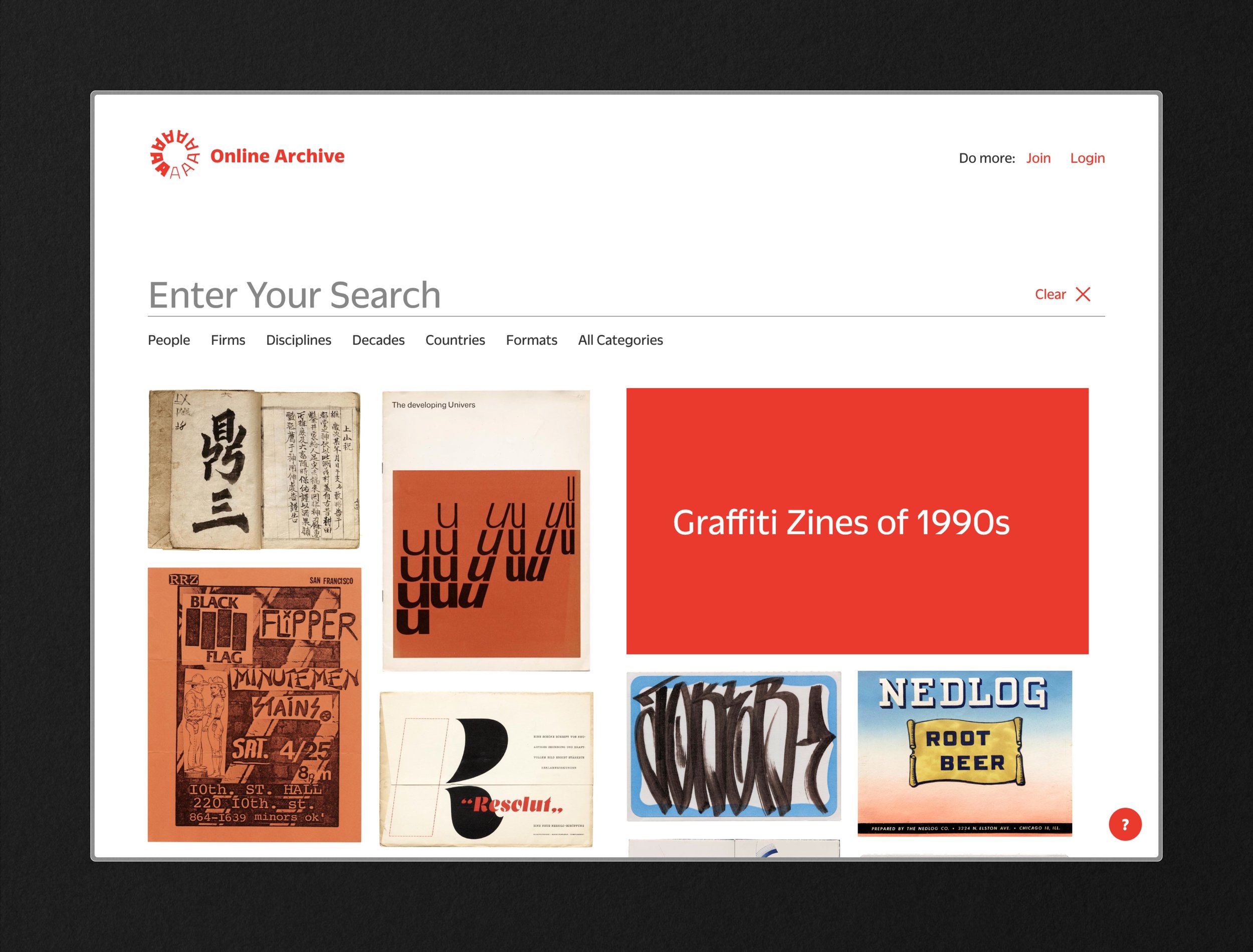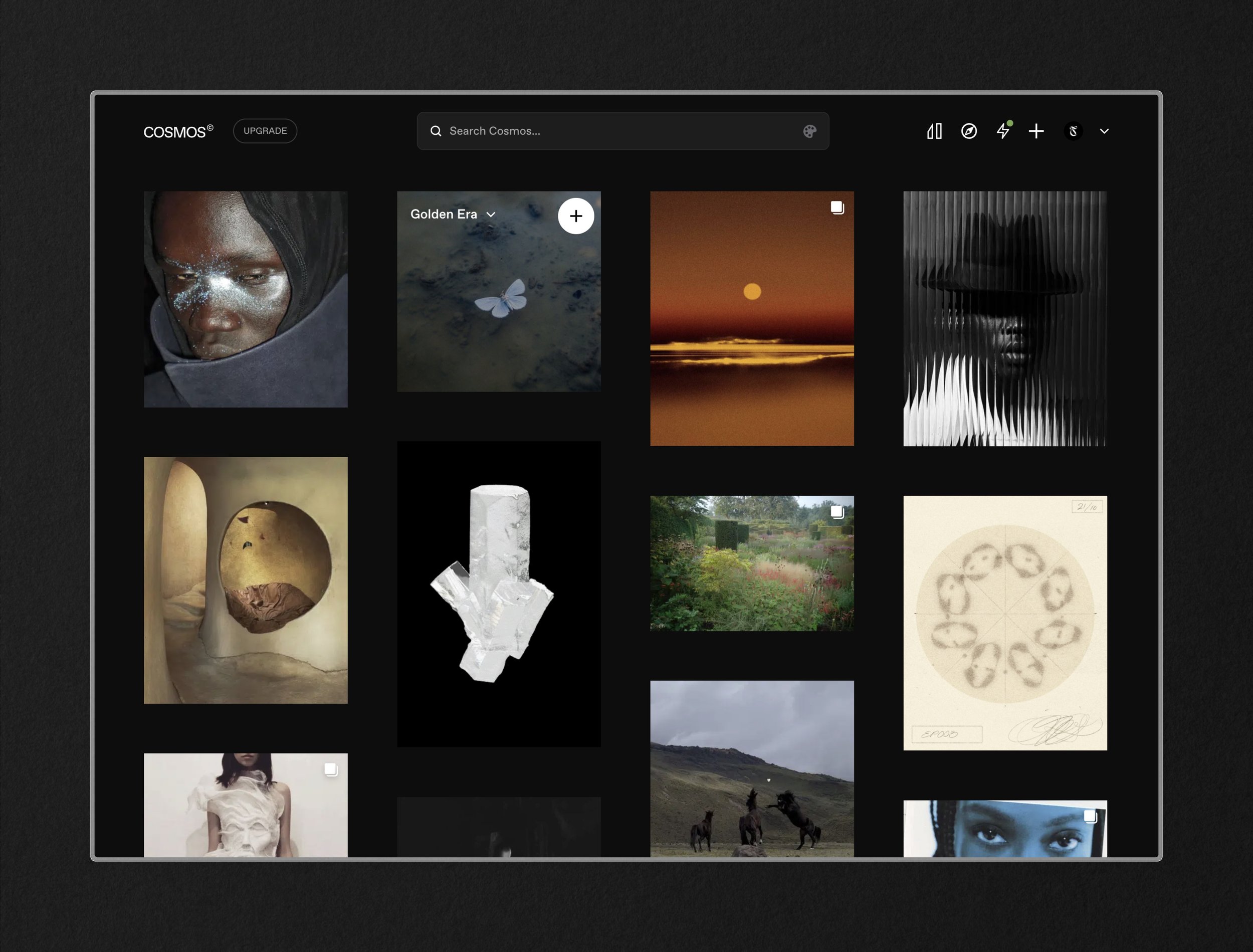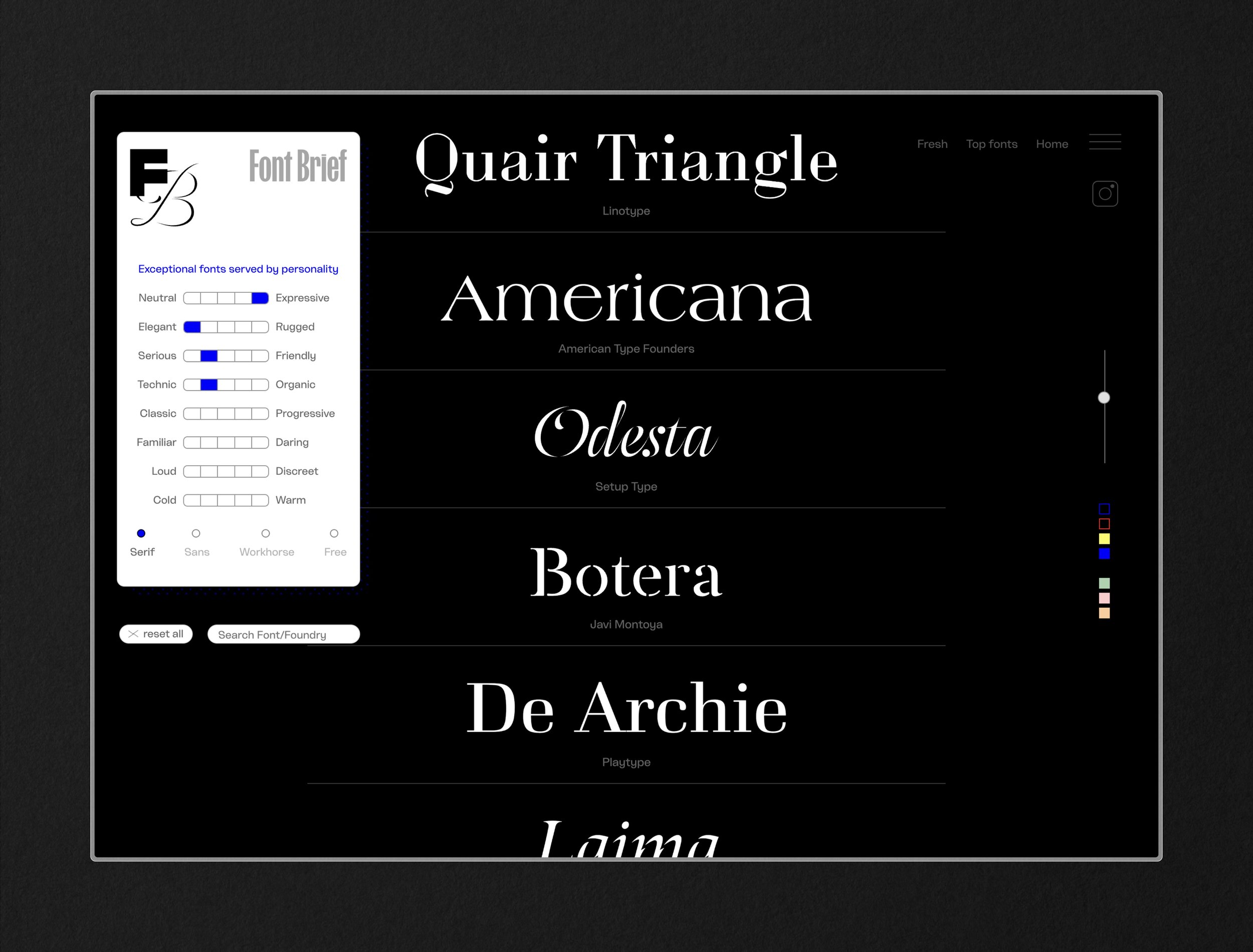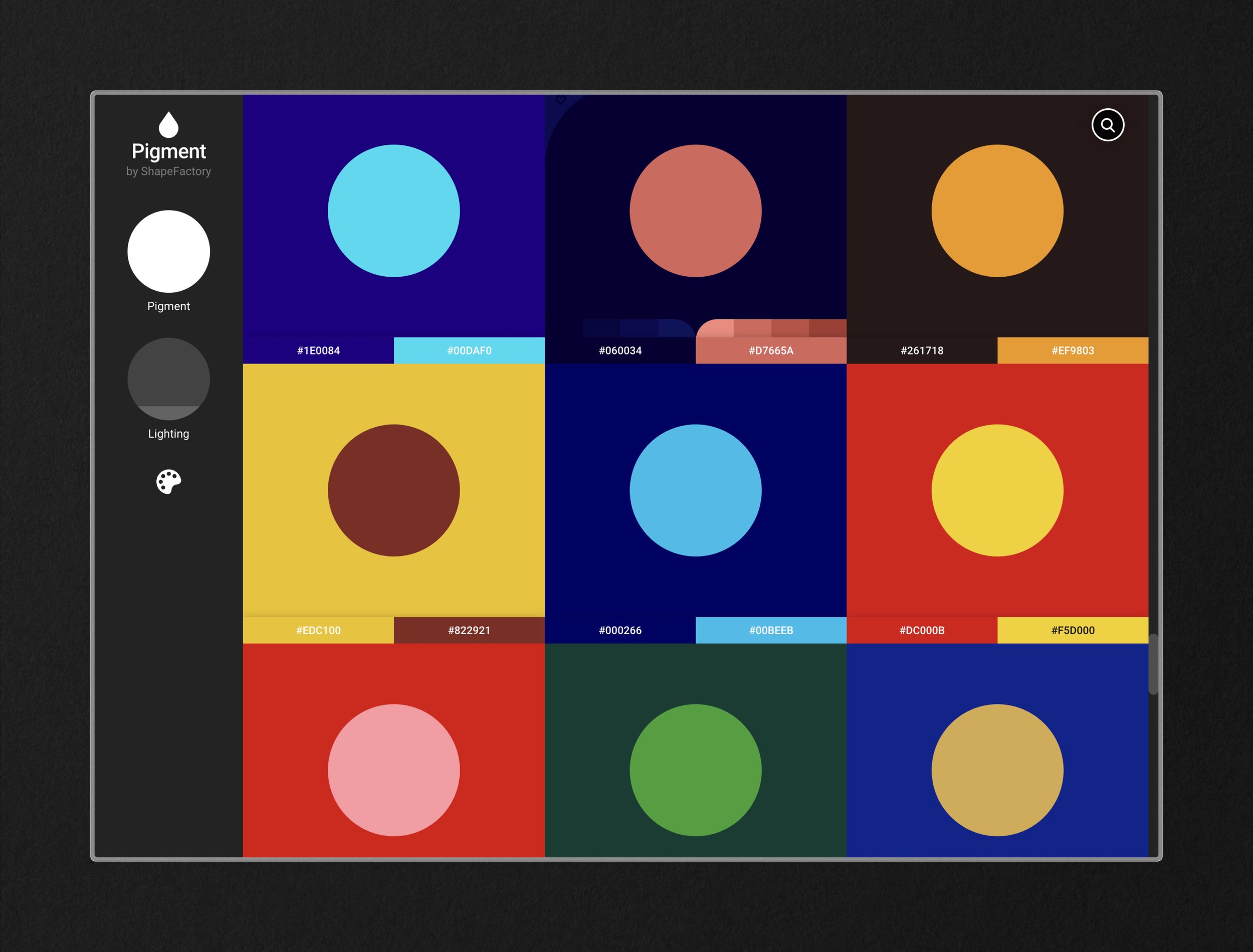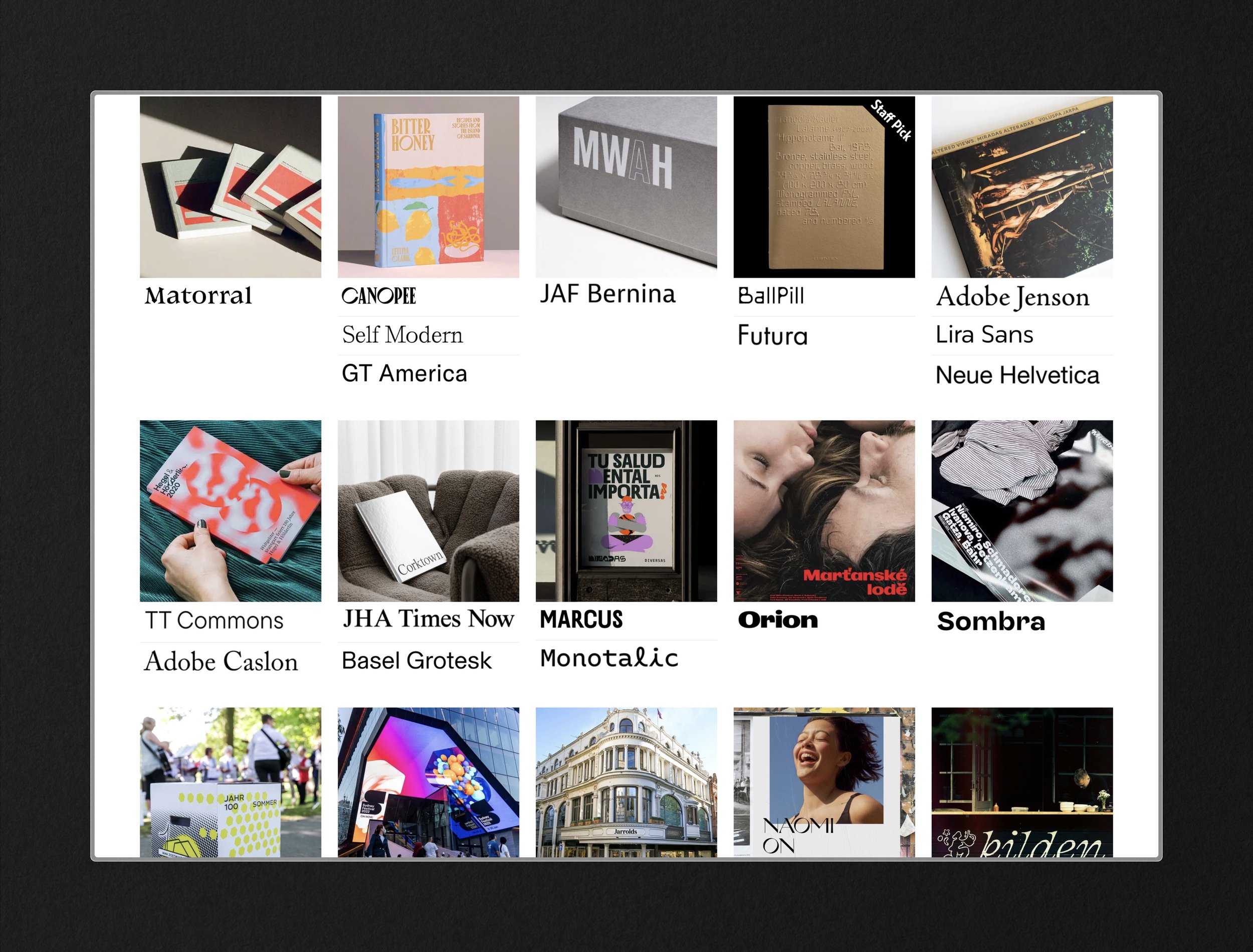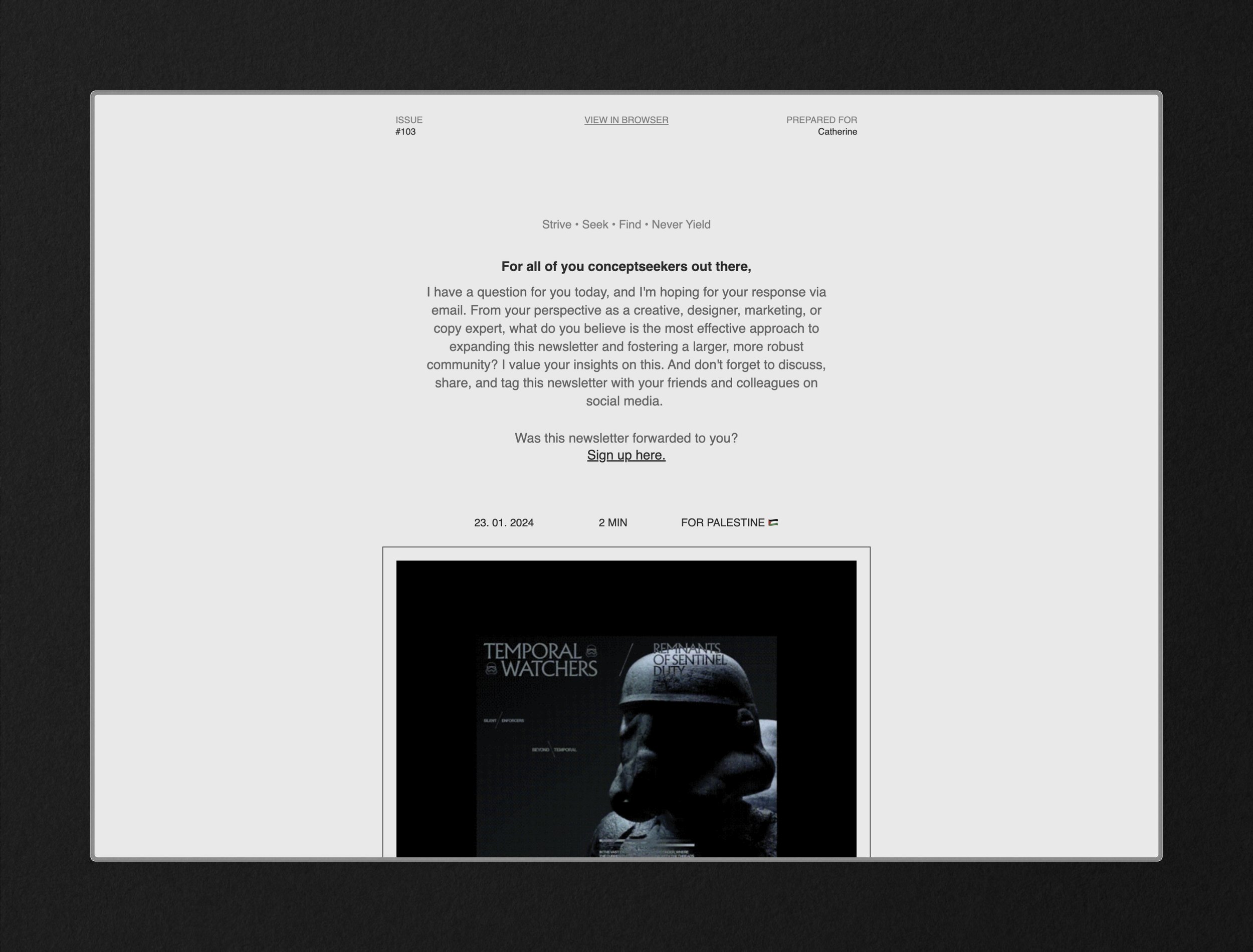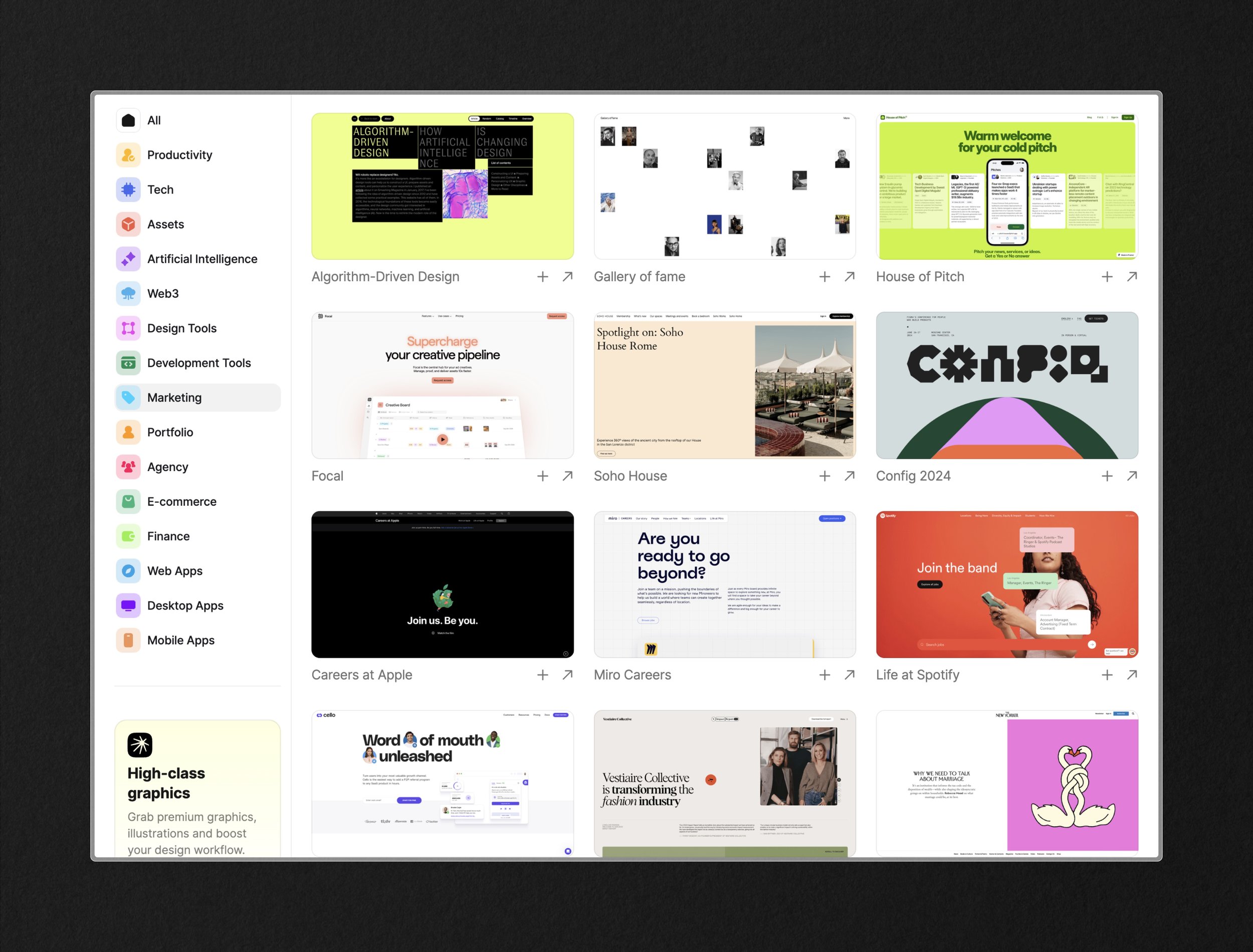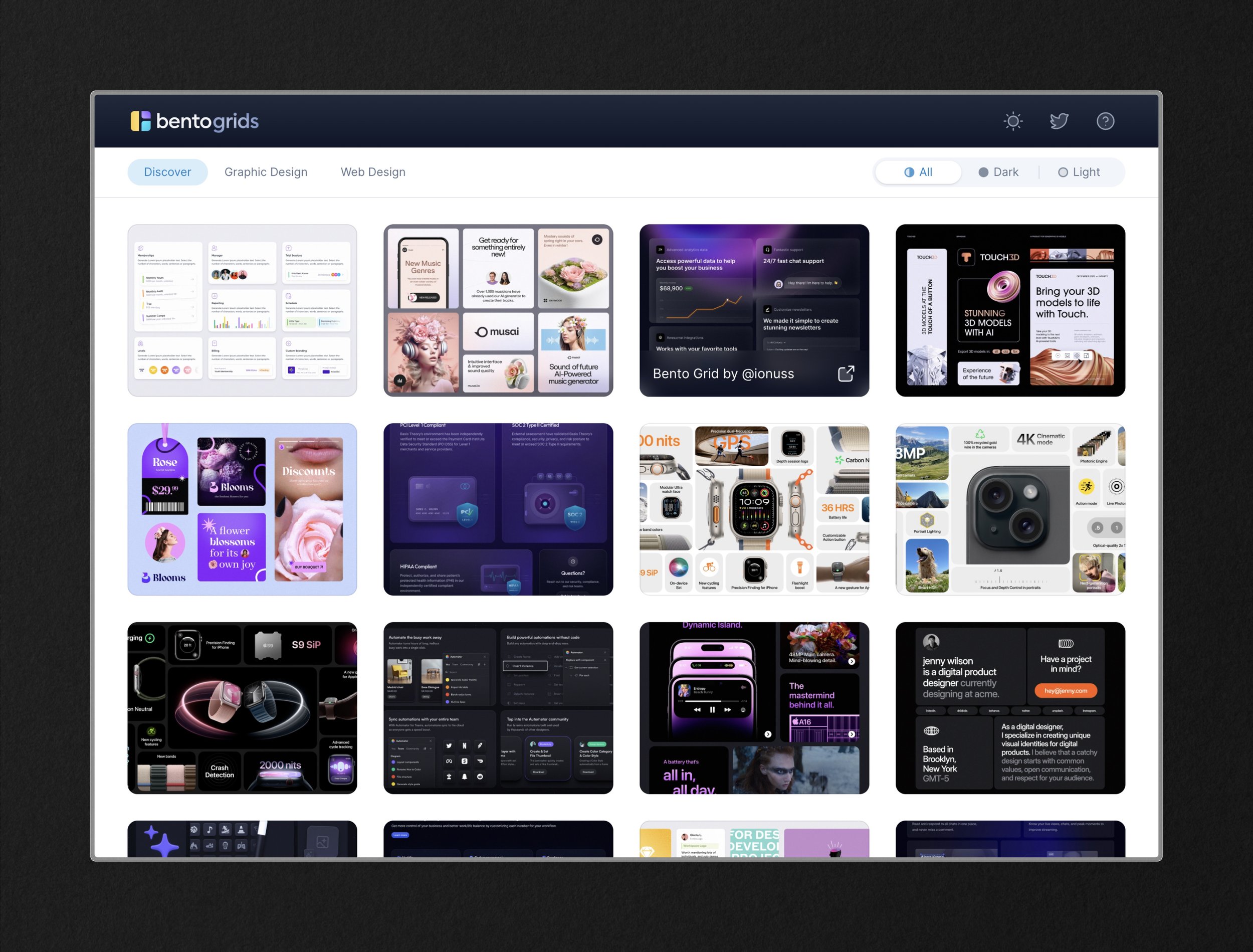Top Online Resources for Designers and Creative Directors
I’ve shared the top Mac apps I use to enhance productivity as a designer and creative director, but now I’m sharing my favorite browser-based resources that will hopefully help you in your creative career to make more compelling designs that stand out from the rest. I’ve also included two must-read newsletters into this stack of resources because they are consistently the newsletters I read from beginning to end each week.
Let’s get into it.
Resources for Better Moodboards
Far too often, I see mood boards assembled solely from visual design references from other designers and existing brand identities. I attribute most of this to oversaturated Instagram feeds and Pinterest boards. When creating a mood board, your goal should be to create a feeling, an energy, a ‘vibe’ that all the elements of a brand expression can originate from. It shouldn’t just be a sample of typography and color to mimic in your design or visual identity.
This is where Letterform’s Online Archive, which is full of public domain imagery samples, and Cosmos, a better Pinterest, come into play. The former primarily showcases typographic treatments across disciplines and decades (and other filtering functions). Using these samples as they are in mood boarding or by extracting the type, you can generate more unique custom typographic treatments for consideration. Cosmos, on the other hand, is what each user makes from it. You can certainly add your own inspiration by uploading or collecting from the uniquely curated content already found on the platform. Using the more raw and under-sourced imagery from Cosmos will help your mood boards convey an idea through texture, shadow, color, and composition rather than other design samples.
Resources for Better Typography and Color
This goes without saying, but some of the best designs I’m sure we’ve all seen are the designs that let the typography and color of the design shine through. That said, not all colors and fonts are worth shining the spotlight on. Using Font Brief can be a fun and creative exercise to do on your own or with a client to help get aligned on how they view certain styles using the traits as the filtering function. Pigment by Shape Factory is one of my all-time favorites for generating unique color pairings. With intuitive lefthand adjustments for lighting and pigment, the possibilities are nearly endless. Then, using Fonts in Use is a perfect way to get ideas for composition and scale when applying your type selection from Font Brief and your palette from Pigment.
Newsletters for Designers and Creatives
If you’re like me and prefer to end the day at ‘Inbox Zero’ then subscribing to a newsletter means it better be good.
Under Consideration’s Brand New Weekly is an industry must-have for anyone working in the design and branding space. The newsletter itself is always extraordinary, with great insights from Armin (the curator) and a consistent, scannable layout. The real richness comes from the community comments and discourse on each featured project. You will need a subscription to access the full brand identity reviews and comment section, but they’ve priced it at a minimum of $20/year. However, if you can pay more, you should — the value is there. My preferred method is to enjoy it with a cup of coffee on Monday mornings set to Do Not Disturb.
Conceptseeker is a newer weekly one I’ve been subscribing to, but it's just as valuable. The content appeals more generally to multiple creative disciplines with a slight focus on UI/UX design. The content features just five short sections that are jam-packed with intrigue, from more online resources like the ones I’m sharing in this article to inspirational quotes to design tips and tricks. It’s usually a guarantee that I end up with four or five more tabs open because of it.
Design in action inspiration
Seeing overly polished case studies on Dribbble and Behance that may or may not (probably didn’t) pass final client reviews can feel like they miss the mark for design inspiration. That’s when I turn to Curated.design and Bento Grids. If you’re sick of seeing bentos, then you can ignore that one but don’t miss Curated.design. Bentogrids is great for getting at-a-glance reviews of style applications and they also filter by general graphic design and aren’t exclusive to UI concepts. Curated.design, however, is the definition of judging ‘above the fold.’ They also have a weekly newsletter to get the inspiration directly to your inbox if you prefer that.
Top Mac Apps for Productivity and Creativity
If you’re a professional working in any element of creativity and design or entrepreneurship, you probably have your own list of the very best Mac apps that help you do what you do. We know that efficiency is key, creativity is paramount, and a good user interface is * chefs kiss *.
Everything I do is backed by a powerful toolkit of Mac apps and online tools (more on those soon…). As we wrap up the year and plan for 2024, I’m more reliant than ever on these tools and want to share them with you in case they help you reach your own goals next year.
Each of these tools caters to different needs and workflows, from computer storage to mood boarding and collecting to better business and time management.
Notion: Project Management Perfected
Currently Using For:
Literally, everything.
Processes and Procedures
Project Management
Content Marketing Planning
Social Media Marketing Calendars
Goal Tracking
Client Project Hubs
Employee and Contractor Dashboards
Journalling
Reading / Book Club Notes
Strength Training Plan
House Projects
This is for you if you’re still stuck using Evernote, OneNote or, heaven-forbid ‘Notes’.
Notion is a powerhouse for project management, note-taking, wikis, client hubs, and so much more. It has an intuitive interface and an extensive set of tools to build everything from project trackers to social media calendars to dashboards and wikis. From initial brainstorming to a final deliverable, Notion’s flexible and scalable tools accommodate all the nature of creative and business management projects. Plus, it is a real-time collaboration and ideation destination.
Arc: A Sleek Browser for Streamlined Work
This is for you if you’re still using Chrome but want something more advanced.
Imagine if your browsing experience was perfectly designed. Well, that’s what The Browser Company did when they created Arc. There is almost too much to say about Arc’s features, but in essence, the app is lightning-fast, visually clean, unexpectedly human, and far more powerful than Chrome when it comes to internet browsing.
Currently Using For:
Also, everything.
Browsing ‘Hubs’
File Downloads Management
Researching and Information Management
Cron: Calendar Mastery Simplified
This is for you if you’re still using Apple Calendar but want better visuals and functionality.
If your work has you juggling multiple hats (and accounts), Cron is a game-changer. From the little things like better font sizes and color display to the big things like shortcuts, meeting availability and seamless integration for generating Zoom links and Notion pages. Less time navigating scheduling means more time spent on what actually matters.
Currently Using For:
Calendaring
one-click Zoom Integration
mymind: Moodboarding and Collections Simplified
This is for you if you want Pinterest but only your content and with better UI and search.
Designers draw inspiration from various sources, and mymind curates this inspiration seamlessly. From text highlights on the web to image saving and uploading, it’s the best way to collect assets from across the web. With automated tagging for uploads and an incredible search function, it’s like pulling out a memory from your mind with a few clicks. For my fellow creative entrepreneurs, this is a must-have for efficiently collecting ideas, references, and inspiration on a uniquely visual journey. Plus, it’s a Mac app, an iPhone app, a web-based tool, and a browser extension.
Currently Using For:
Vision Boards
Moodboards
Rebrand Inspiration(s)
Color Sampling
Quotes and Reference Writings
Miro : Visual Review and Change Tracking
This is for you if you’re still sending PDFs and attachments for client review.
Creatives thrive on visuals, and Miro understands this implicitly. It transforms the collaborative process with clients and teams into a flexible visual framework designed in whatever way that best serves your process. With real-time collaboration with multiple users, it’s also perfect for facilitating strategy calls with groups.
Currently Using For:
Project and Asset Reviews
Real-time Feedback
Digital Whiteboarding
Edison Mail: Better Unified Inbox Management
This is for you if you prefer managing email in an app and not a browser.
For email management, I’ve tried it all, from native Gmail to Outlook to Spark to Airmail to Canary, and Edison Mail gives me all of the best of those. Using their Unsubscribe feature has helped make Inbox Zero an everyday reality. Plus, no data-mining and incredible privacy features.
Currently Using For:
Unified Inbox
Email Management
DaisyDisk: Effortless Storage Management
This is for you if you need an unsung hero to manage your computer storage.
DaisyDisk simplifies and visualizes the often-overlooked task of storage management, ensuring your devices are organized and optimized. There is not much more to say on that other than it can also search purgeable and hidden spaces that you can’t otherwise access. Plus, it’s pretty to look at.
Currently Using For:
Large File Removal
Core Folder Organization
Flow: Pomodoro Productivity at Its Finest
This is for you if you need help structuring your deep work sessions.
For creatives, it can be so easy to get distracted by constant Slack messages, emails, and visual reviews. The Pomodoro technique is a beloved time-management tool, and Flow makes it beautiful, intuitive, and flexible. By setting various interval types dependent on work, I can get more (and better) work out of my deep work time blocks.
Currently Using For:
Time-Management
Productivity by Project Type
Toggl Track - Mastering Time, Boosting Productivity
This is for you if you want flexible and detailed time tracking by project, tag, and billable rate.
Reliable and detailed time management is crucial for creative entrepreneurs, and Toggl Track is the best ally. It goes beyond tracking hours by project but also offers insights into project timelines and resource allocation. For designers balancing client work and personal projects, Toggl Track provides clarity and ease of use. Plus, tracking even non-billable work can help you get a picture of where you’re spending time during the week.
Currently Using For:
Project Time-Tracking
Time Reporting
Billing Process Support
These Mac apps are the backbone of my work week, and each brings unique and specific boosts to my day-to-day. If you end up using any of them and uncovering even more features in each of these, my hope is that they help boost your work too. Organized creativity, streamlined processes, and boundless inspiration are yours.
Six Lessons from Six Years in Business
In March 2022, I celebrated the six-year anniversary of starting Treadaway. In reflecting on this milestone, I realized just how long the days have been but how short the years have been. Two of those years were pandemic years. Two of those years were grad school years. Two of those years were “What the #$% am I doing?” years.
The entrepreneurship journey has certainly not been an easy one but I wouldn’t trade the experiences, clients, and lessons for anything.
To honor six years as an entrepreneur, I’ve been thinking about the six major lessons I’ve learned (some of them the hard way).
Lesson 1: Serve constantly.
As a consultant, in essence, you monetize your ability to serve. Keeping true service at the heart of business is essential. If every interaction in your business is framed only as a transaction in your mind, you miss all the intangible and truly extraordinary aspects of being a consultant. Clients and projects aren’t just names and revenue, they are an opportunity to institute freedom, inspire change, and truly solve problems. Don’t miss this.
Lesson 2: Consume thoughtfully.
As a business owner, you’ll find countless products, blogs, and techniques for success aimed directly at you (including this blog you’re reading!). Be thoughtful in your consumption of this information — don’t just listen to anybody and anything. The quality and the quantity of the advice you consume will determine the success of the actions you take next. In the words of Dieter Rams, “Less but better.”
Lesson 3: Take all responsibility.
If you succeed, if you fail, if you err, if you pivot, if you question, if you misled, you must take all responsibility. The blame game will be the death of joy in your business. Taking responsibility and ownership over every piece of your business can liberate you from fear of failure and transform your journey into one beautiful experiment.
Lesson 4: Champion yourself.
When you start your business, everyone cheers you on and champions your work and you can ride that wave for a while. When the tides calm, you’ll need to know how to champion yourself. When the balls drop, you’ll need to know how to put it into perspective. When year five hits, you’ll need to know how to persevere. Championing yourself isn’t just self-promotion, but dictating thoughtfully the words you say about yourself and the thoughts you have about your work.
Lesson 5: Kill your ego.
Learning to kill your ego while keeping your self-worth is a critical journey for every creative and every business owner. If every time you receive feedback, you take it as character attack, you are setting yourself up for failure. Ego will drive you to feel deeply about your work. Self-worth will drive you to feel value from your effort. Feedback through ego will inherently feel like an attack. Feedback through self-worth will look like an opportunity for growth. If you aren’t growing, you’re dying. Kill your ego instead of killing your business.
Lesson 6: Get selective.
Not everything is worth your effort. Time is your most precious resource. Being selective about what you do, who you work with, what platforms you engage on, what content you consume, what lives on your desk, what people you hire, what people you confide in is critical. You do not need to do it all. Find what feeds you and eliminate the extraneous.
Remember that the spirit of these lessons is from my own journey. Your journey will look different. One thing I know without a doubt is that owning your own business is not for everyone but entrepreneurship is. You can take the lessons and insights and energy and perspective into your work no matter what you do and where you do it.
Keep learning,
Catherine
The Disciplined Pursuit of Less and the Habits that Changed Everything
Suzie Price, a dear colleague of mine, recently asked me to be a guest on her podcast about all things Essentialism. (See: Essentialism - The Disciplined Pursuit of Less by Greg McKeown).
The concept for me has manifested in one simple—yet deeply challenging—action: ruthless excising of self, of work, of focus, and community.
In the words of Greg McKeown, my trivial many have been cut down mercilessly for the sake of my vital few. Both personally and professionally, I’ve found, participated in, consulted against, and witnessed that we live in a world where almost everything is worthless, and few things are actually valuable (read: the core precept of Essentialism).
The removal of excess—a minimalist principle I’ve already well adopted into my physical space—becomes much more complicated as a brand consultant. The biggest struggle I see in brand and business strategy is a lack of clarity on the business or entrepreneur’s essential intent. Most companies (read: overwhelmed leadership) can't answer the question of: “If we could be truly excellent at only one thing, what would it be?”
This lack of essential intent is ultimately where brand strategy comes into play for companies.
Developing a brand strategy requires, ultimately, an essentialist view of infinite possibilities for a brand and focusing on just those vital few — something few CEOs and entrepreneurs want to do. Having a set brand strategy also means adhering to that essential intent in all the business does from content to clients. But brand strategy, like an essential intent, in the words of Greg McKeown, “eliminates a universe of other options and maps a course for the next five, ten, or even twenty years of your life.”
While impossible to boil down the exceptional takeaways from the book, there are two that have changed my life most profoundly:
No. 1: “If you don’t prioritize your life, someone else will.”
This is the crux of the essentialist dilemma. You must first have this understanding before embarking on becoming an essentialist. In your journey toward simplification and intentionality, you will find you have less time to engage with the trivial many — whether it’s people, things, conversations, or ideas.
You will suddenly find you have abundant time to spend on your defined purpose — a purpose that may be different than how you used to be as a non-essentialist. This intentionality comes from you deciding (read: prioritizing) your daily interaction with the world and preventing someone else, no matter how important they are, from diverting you from your essential intent.
No. 2: “The way of the Essentialist means living by design, not by default.”
This concept seems so simple, but when you are tasked with ensuring intentionality in everything you do, you start to realize how little is by design — from what’s on your desk, in your car, what you wear or don’t, what social settings you engage in and so much more.
As an essentialist, you sacrifice what is familiar, perhaps what is even easy, for the exhilarating unknown of uncompromised focus. Living by design doesn’t mean living selfishly for your sake and no one else’s. Living by design means living at ease with yourself and your essential intent removing obstacles joyfully and thoughtfully.
Essentialism has not only the power to transform our personal lives but our corporate and entrepreneurial ones as well.
To aim, without falter, toward creating a more thoughtful existence for yourself and those around you is what I challenge you to try in the coming months.
In the meantime, listen to Suzie and I discuss how this philosophy has changed our lives, transformed our business, and created more ease in our day-to-day.
Need an essentialist starting point? Keep in mind these four elements.
“As you evaluate an option, think about the single most important criterion for that decision, and then simply give the option a score between 0 and 100. If you rate it any lower than 90 percent, then automatically change the rating to 0 and simply reject it.” – Greg McKeown
Develop a routine to give yourself space to think, to decide what is truly essential.
“To become an Essentialist requires a heightened awareness of our ability to choose.” – Greg McKeown
For capable people who are already working hard, there limits to the value of hard work. It’s not about how much you do but about what you are doing.

